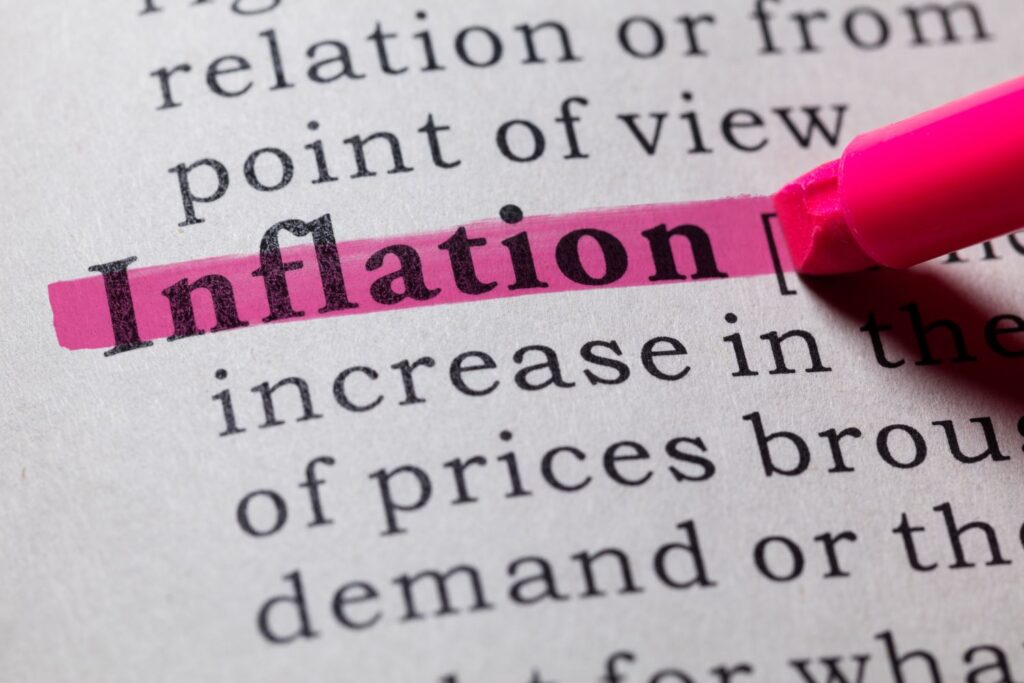You hear it all the time: you should make sure your retirement savings at least keep pace with inflation. But what is inflation, and how does it really affect your retirement savings?
In simple terms, inflation is defined as an increase in the general level of prices for goods and services. Deflation, on the other hand, is defined as a decrease in the general level of prices for goods and services. If inflation is high, at say 10% – as it was in the 1970s – then a loaf of bread that costs $1 this year will cost $1.10 the next year.
Inflation in the United States has averaged around 3.29% from 1914 until 2016, but it reached an all-time high of 23.70% in June 1920 and a record low of -15.80% in June 1921. Most will remember the high inflation rates of the ’70s and early ’80s when inflation hovered around 6% and occasionally reached double-digits.
How Does Inflation Affect Your Retirement Savings?
The answer is simple: inflation decreases the purchasing power of your money in the future. Consider this: at 3% inflation, $100 today will be worth $67.30 in 20 years – a loss of 1/3 its value. Said another way, that same $100 will only buy you $67.30 worth of goods and services in 20 years. And in 35 years? Your $100 will be reduced to just $34.44.
How is Inflation Calculated?
Every month, the Bureau of Labor Statistics calculates indexes that measure inflation:
- Consumer Price Index (CPI) – A measure of price changes in consumer goods and services such as gasoline, food, clothing and automobiles. The CPI measures price change from the perspective of the purchaser.
- Producer Price Indexes (PPI) – A family of indexes that measure the average change over time in selling prices by domestic producers of goods and services. PPIs measure price change from the perspective of the seller.
How Does the Federal Reserve Attempt to Control Inflation?
Up until the early part of the 20th century, there was no central control or coordination of banking activity in the United States. In fact, the U.S. was the only major industrial nation without a central bank until Congress established the Federal Reserve System in 1913 with the enactment of the Federal Reserve Act.
With the Federal Reserve Act, Congress set three very specific goals for the Fed: to promote maximum sustainable employment, stable prices, and moderate long-term interest rates. In order to help the Fed stabilize prices, Congress gave the Fed a very powerful tool: the ability to set monetary policy. And one way the Fed sets monetary policy is by manipulating short-term interest rates in an effort to control inflation. If the Fed believes that prevailing market conditions will increase inflation, it will attempt to slow the economy by raising short-term interest rates – reasoning that increases in the cost of borrowing money are likely to slow down both personal and business spending.
The flip side is true as well: if the Fed believes that the economy has slowed too much, it will lower short-term interest rates in an effort to lower the cost of borrowing and stimulate personal and business spending. As you might imagine, the Fed walks a very fine line. If it does not slow the economy soon enough by raising rates, it runs the risk of inflation getting out of control. And if the Fed does not help the economy soon enough by lowering rates, it runs the risk of the economy going into recession.
Currently, the Fed believes that “inflation at the rate of 2 percent (as measured by the annual change in the price index for personal consumption expenditures, or PCE) is most consistent over the longer run with the Fed’s mandate for price stability and maximum employment.”
What Investors Need to Remember
It’s imperative that your long-term retirement strategies account for inflation and that you prepare for a decrease in the purchasing power of your dollar over time. Most would suggest you assume inflation will be around 3% – its historical average.
It’s important to be certain that goals and risk tolerances are clearly understood and matched to portfolios, to help confirm that target portfolio balances are maintained. As always, reach out to your advisor with any questions pertaining to your personal wealth plan.




















